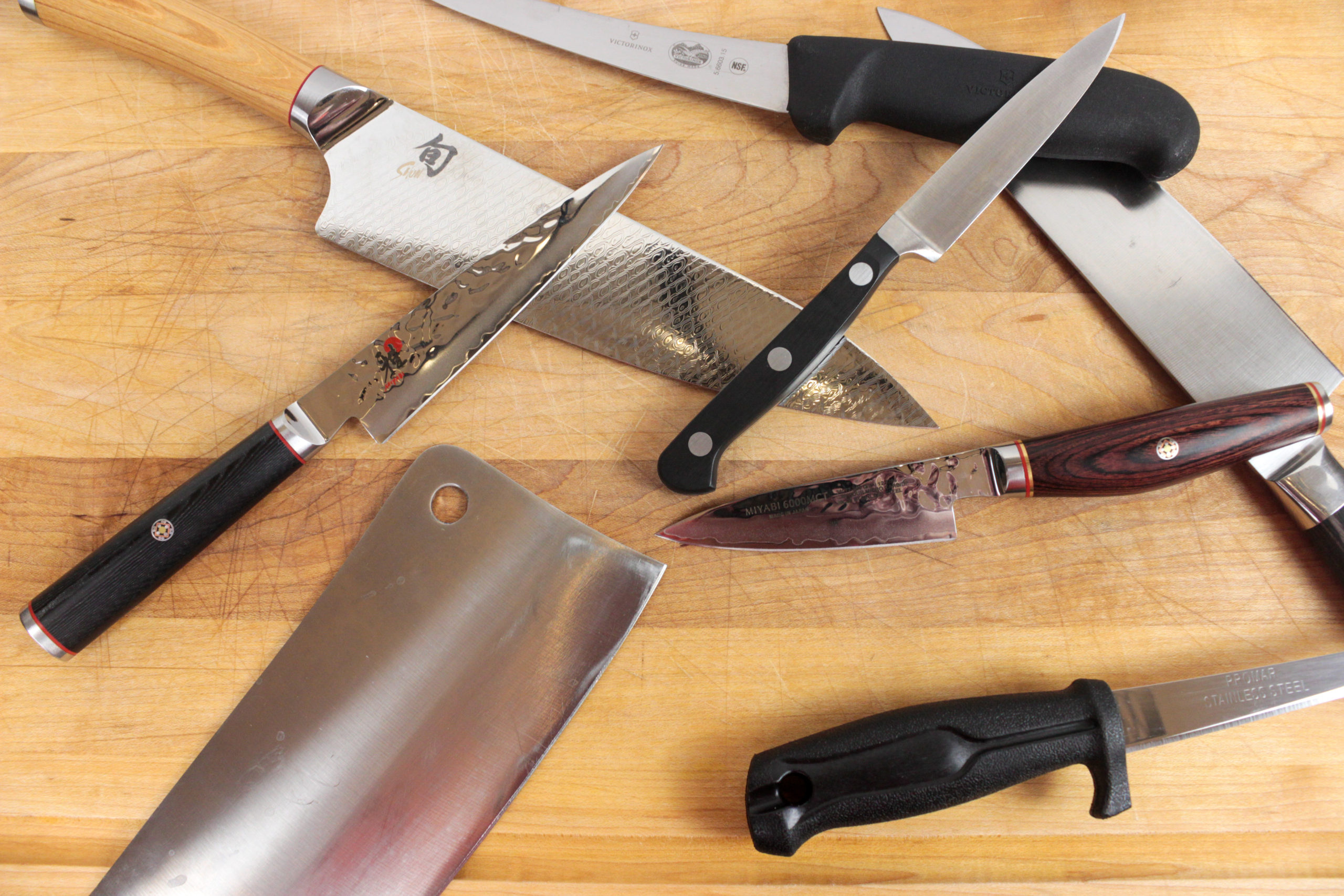March 2, 2023
Your Guide to Kitchen Knives

We all use knives in the kitchen.. But have you ever found yourself overwhelmed with the endless options of kitchen knives? I’m here to help! Consider this your guide to kitchen knives as I explain what to look for when buying a knife and when you would choose one knife over another.
Three types of kitchen knives
Chefs knife
- Will be your main, go-to knife. The most versatile of kitchen knives.
- Ideal for the majority of your day to day kitchen tasks.
- Great for cutting, slicing and dicing.
- If you are going to have ONE knife, this would be the one to choose!
Petty/Utility Knife
- More specialized.
- Used for cutting small items on a cutting board.
- Used when fine detail work matters.
Pairing Knife
- Shorter handle with a small, sharp blade.
- Great for pealing fruits and vegetables.
- Delicate cutting tasks.
Santoku Knife
- Great for chopping herbs, meats, fruits and vegetables.
- Fantastic all-purpose knife to have in the kitchen.
Boning Knife
- Long, thin and very sharp blade.
- Great for trimming fat off of meat or meat off of a bone.
Country of origin
Germany
- Are often thicker and more durable than their Japanese counterparts.
- Great for chopping harder items and cutting through bones.
Japanese
- Are often thinner and more lightweight.
- Great for finer detail and chopping up softer items.
Type of metal
Stainless Steel
- Easiest to maintain, but on average softer.
Carbon steel
- Harder to maintain, but on average are harder.
Stainless clad
- Try to give best of both worlds with an outer protection layer of stainless steel and an inner carbon steel that makes up the edge.
Hardness (Rockwell scale)
- The higher the number the harder the metal.
- Too soft and the blade will dull.
- Too hard and the blade will chip.
- 60-64 is the sweet spot.
Type of edge
Dual bevel
- The preferred choice for most home chefs.
- Easiest to use.
Single bevel
- Easier to sharpen.
- Slices through items easier.
- Great for delicate items such as sushi.
- Often will cause the user to curve while slicing because it has only one bevel.
Handle
Shape
- Will often be dependent on the type of knife and if it is a German Japanese knife.
- German handles are what most people think of when they think of a kitchen knife.
- Japanese handles can be a few different options, but the biggest thing to think about is whether it is ambidextrous or not.
Material
- Wood
- The most expensive
- Great balance of all qualities you want in a handle.
- Plastic
- Cheapest
- Not as durable
- Has great grip in the hands.
- Metal
- Will be the most durable.
- Oftentimes very slippery when hands are wet and slimy.
Proper Grip
- Should be pinching the blade with your pointer and forefinger right in front of the handle.
- The rest of your fingers should fit comfortably around the rest of the handle.
Balance point
- When starting out you want the balance point of the knife to be as close as possible to where your forefinger and thumb meet
- Go and feel each knife you want and maybe even try them out to see which works for your style.

Use this article as your guide to kitchen knives when you are looking for your next knife.
"Olive Garden Chicken Pasta"
"Shirley Temple Floats"